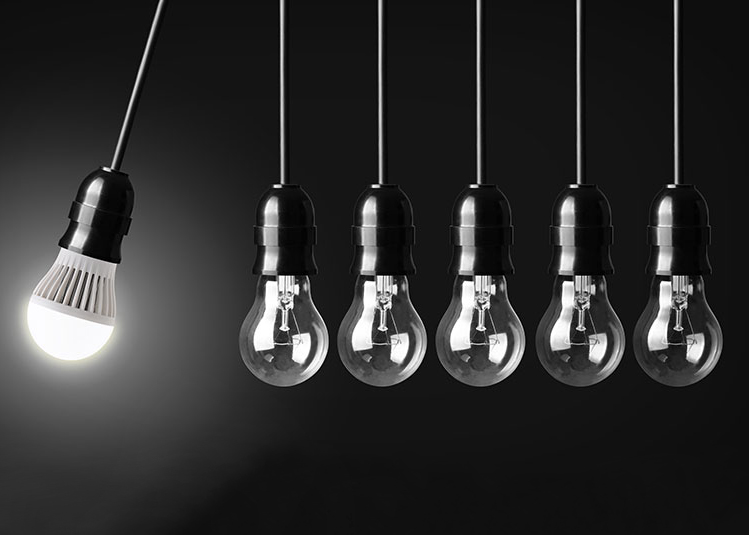Led vs incandescent, watts better?
Incandescent bulbs are one of the most recognized lighting options available, but they are also the most dated. These types of bulbs produce light when electricity heats a filament inside the bulb. Light Emitting Diode, or LED bulbs, produce light using a semiconductor filled with electrons that fill holes in the material when an electric current is applied. Therefor, LEDs require less energy to provide the same amount of light as an incandescent bulb of similar wattage.
Lumens vs. Wattage
Lumens and wattage are terms that are often used interchangeably, but they are actually quite different. Wattage is the amount of energy the bulb uses to produce light. Lumens are a measure of the bulb’s brightness. A 60-watt incandescent bulb requires 60 watts of electricity and emits about 900 lumens, while an LED bulb requires only 8 watts to produce the same amount of light.
Color Temperature
Color temperature is an important factor when you compare light bulbs. Usually listed on the package, the color temperature is measured in degrees of Kelvin from warm yellow light (2500 K) to cool blue light (7000 K). Different lighting colors can affect both your mood and the decor in your home. Yellow light is generally considered relaxing, while blue lighting is energizing. Both incandescent and LEDs come in a range of color temperatures, but incandescent bulbs are generally on the warm yellow end of the spectrum, while LEDs tend to be cool blue. Both types offer ‘daylight’ bright white options which mimic natural lighting.
Battle of the Bulbs
From brightness levels to efficiency and lifespan, there are many factors to consider when making an incandescent vs LED light bulb comparison. Each of the contenders has its pros and cons. Here’s how they measure up:
Round 1: Warming Up
Efficiency
LEDs blaze into action as soon as the switch is flipped, while incandescent bulbs take a while to warm up and reach their full brightness. During use, much of the energy used by incandescent bulbs is wasted as heat. Incandescent bulbs emit 85 BTUs of heat during each hour of use. LEDs stay cool, emitting only 3.4 BTUs.
Sensitivity
Incandescent bulbs are sensitive to low temperatures and humidity, which can result in decreased performance and even breakage in inclement weather. LEDs can resist both hot and cold temperatures as well as humid conditions, which means you can use them inside and outdoors in damp locations.
Round 2: Going the Distance
Durability
Heavy-weight LEDs have thick walls and a dynamic design that can withstand bumping and jarring. The thin glass and delicate round shape of incandescent bulbs break easily under stress.
Lifespan
The typical lifespan of an incandescent bulb is around 1,200 hours, while long-lasting LEDs can go the distance, with each bulb providing an average of 50,000 hours of light.
Round 3: Knock Out!
Environmental Impact
While incandescent and LED bulbs are both mercury-free and RoHS compliant, both affect the environment through carbon dioxide emissions. Using 30 incandescent bulbs each year results in 4,500 pounds of emissions, while the same number of LED bulbs releases only 451 pounds.
Kilowatts Per Year
When considering incandescent vs. LED bulbs, the amount of energy used per year can be the deciding factor. Homes with 30 incandescent bulbs use about 3,285 kilowatts of electricity each year, while the same number of LED bulbs use only 329 kilowatts.
Choose a Winner
LEDs are the clear winner in the battle of the bulbs. Incandescent bulbs are dated technology, and are slowly being phased out in favor of options with improved efficiency, durability and lifespans. Switching to LED fixtures consumes less energy and reduces your environmental impact while adding brighter lighting throughout your home.

